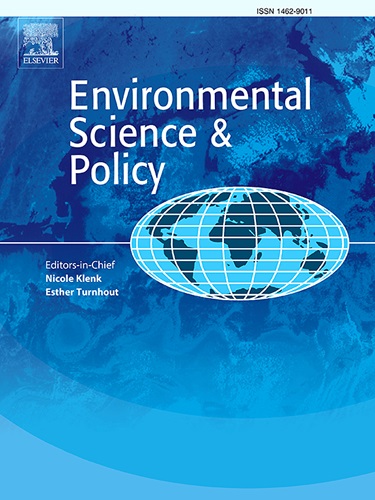美国转基因作物的环境评估和监管监督
IF 5.2
2区 环境科学与生态学
Q1 ENVIRONMENTAL SCIENCES
引用次数: 0
摘要
生物技术的进步正在迅速塑造食品和农业的未来,基因工程工具利用经典的转基因方法和尖端的基因组编辑技术,如CRISPR。这些进步扩大了具有新性状的作物的发展,具有广泛的应用范围。与此同时,监管体系和评估过程一直在努力跟上这些快速创新和技术的步伐。值得注意的是,由于潜在风险的复杂性和时代性,在调查这些作物开发和生产的潜在环境影响时,这可能是一个问题。本研究探讨了美国对转基因作物的环境评估是如何进行的,以及目前是如何进行的。这是通过概述联邦机构的监管框架和环境评估过程,然后审查五个案例研究来完成的,这些案例研究反映了现有的和新兴的基因工程技术。根据提交的信息和所进行的分析的深度,对每个案例的环境评估的稳健性进行了评估。这项研究的结论收集了三个主要建议:(1)需要建立与创新同步的治理体系;(2)全面加强对转基因作物的环境监督;(3)需要在整个评估过程中保持透明度。这项研究旨在促进改进的环境评估和治理实践,以促进基因工程在粮食和农业系统中的新应用。本文章由计算机程序翻译,如有差异,请以英文原文为准。
Environmental assessment and regulatory oversight of genetically engineered crops in the United States
Biotechnology advancements are rapidly shaping the future of food and agriculture with genetic engineering tools utilizing both classical transgenic methods and cutting-edge genome editing techniques such as CRISPR. These advancements have expanded the development of crops with novel traits, with a wide range of applications. At the same time, the regulatory system and assessment processes have struggled to keep pace with these rapid innovations and techniques. Notably, this can be an issue when investigating the potential environmental impacts in the development and production of these crops due to the complexity and temporal nature of potential risks. This study explores how environmental assessments for genetically engineered crops have been and are currently being conducted in the United States. This was done by outlining the regulatory framework and environmental assessment processes across federal agencies and then examining five case studies that reflect both incumbent and rising genetic engineering techniques. The robustness of the environmental assessment was evaluated for each case based on the submitted information and the depth of analysis conducted. Conclusions from this study gleaned three major recommendations: (1) the need for governance systems keeping pace with novel innovations, (2) an overall strengthening of environmental oversight for genetically engineered crops, and (3) the need for transparency throughout the assessment processes. This research aims to foster improved environmental assessment and governance practices for novel applications of genetic engineering in food and agriculture systems.
求助全文
通过发布文献求助,成功后即可免费获取论文全文。
去求助
来源期刊

Environmental Science & Policy
环境科学-环境科学
CiteScore
10.90
自引率
8.30%
发文量
332
审稿时长
68 days
期刊介绍:
Environmental Science & Policy promotes communication among government, business and industry, academia, and non-governmental organisations who are instrumental in the solution of environmental problems. It also seeks to advance interdisciplinary research of policy relevance on environmental issues such as climate change, biodiversity, environmental pollution and wastes, renewable and non-renewable natural resources, sustainability, and the interactions among these issues. The journal emphasises the linkages between these environmental issues and social and economic issues such as production, transport, consumption, growth, demographic changes, well-being, and health. However, the subject coverage will not be restricted to these issues and the introduction of new dimensions will be encouraged.
 求助内容:
求助内容: 应助结果提醒方式:
应助结果提醒方式:


